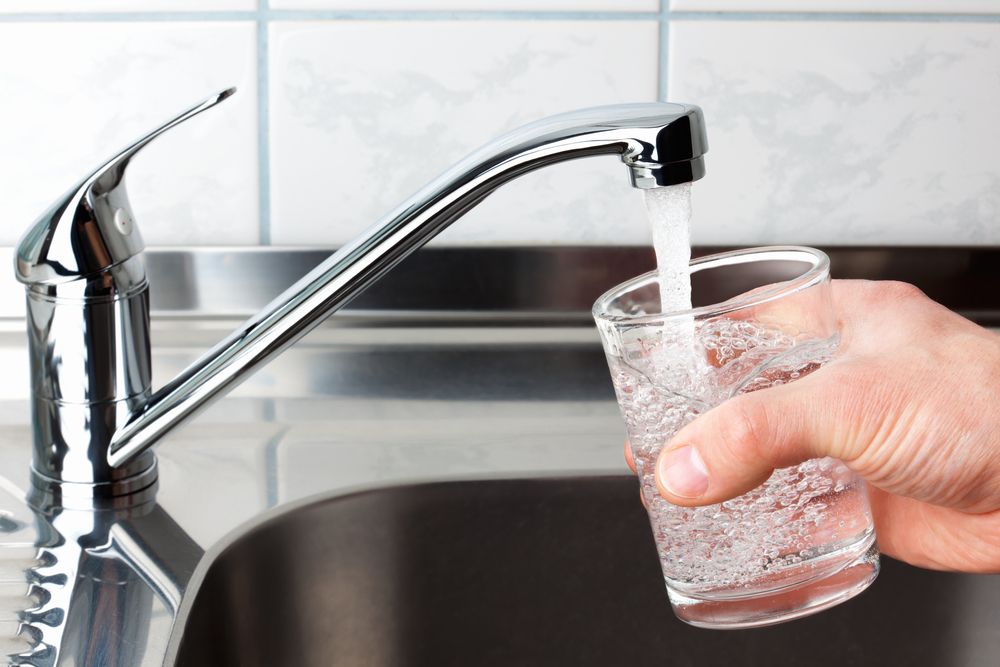What Hazards Lurk in Your Tap Water?
If the catastrophic water crisis in Flint, Michigan has you wondering, “Is the water in my home safe?,” you aren’t alone.
For years we’ve known that lead is dangerous – lead paint was banned in 1978 after it was dubbed the most serious environmental health hazard for children in the United States. Residual dust from stripped or repainted lead surfaces remains one of the most common sources of exposure for both children and adults. But the toxin also shows up in other surprising places in our homes. The colorless, odorless and tasteless metal can go undetected in tap water and cause severe and permanent health problems.
Lead-laced tap water usually comes from the corrosion of older fixtures or from the solder that connects pipes. When water sits in leaded pipes for several hours, lead can leach into the water supply. It’s important to take a proactive approach to protect yourself and your family from contamination — especially if your home was built before 1986.
The Dangers of Living with Lead
There is no safe level of lead, and exposure is especially dangerous for babies, young children and women who are pregnant, breast-feeding or planning on becoming pregnant. If lead is absorbed into the bones, it can stay there for decades and recirculate in the blood during pregnancy, potentially poisoning the mother and fetus. The metal mimics calcium in the body and causes premature birth, a reduced birth weight, seizures, behavioral disorders, brain damage and a lower IQ level.
The American Cancer Society lists lead compounds as a probable human carcinogen with a link to kidney, brain and lung cancer, among others. It also increases the risk of stroke and high blood pressure. Fortunately, lead can't move from water into skin, so it is safe for bathing as long as its not consumed.
The Silent Symptoms
Low levels of lead exposure have no obvious or immediate symptoms and can go undetected until dangerous amounts have accumulated. Contact your doctor immediately if you have any of the following symptoms:
- abdominal pain
- abdominal cramps
- aggressive behavior
- constipation
- sleep problems
- headaches
- irritability
- loss of developmental skills in children
- loss of appetite
- fatigue
- high blood pressure
- numbness or tingling in the extremities
- memory loss
- anemia
- kidney dysfunction
A blood test is the best way to diagnose lead poisoning or screen for exposure in young children. Lead screening typically starts at age 6 months to 12 months but guidelines vary from state to state.
Irreversible Damage
There is no way to reverse the damage done by lead poisoning, so prevention is the only option. But a diet high in calcium, iron and vitamin C can slow lead absorption.
Chelation therapy, a synthetic solution-EDTA (ethylenediaminetetraacetic acid) injected into the bloodstream, may be used as treatment for extreme lead poisoning. Chelation therapy removes heavy metals and/or minerals from the body through urine, however it is ineffective in treating an already compromised brain and nervous system.
Get Ahead of the Lead
If you want to protect your family from lead in drinking water you should, at the very least, be using a filter. There are also other ways to reduce your risk of lead exposure.
- Use only cold water from your faucets for cooking and drinking. Lead can enter the water supply from lead solder found in plumbing, lead service connections or lead pipes in homes and buildings. Cold water is much less likely to leach lead from these sources than hot water.
- If a faucet hasn’t been turned on for several hours, let the cold water run for a couple of minutes before collecting it for use.
- Use a water filter specifically designed for lead reduction. A Brita water filter can remove up to 93 percent of the lead found in tap water.
Test Your Tap
The only way to know if your tap water is safe is to have it tested. Start with your local water supplier. Sometimes they will come to your home and test for free. If not, you can buy a lead testing kit from a home improvement store to collect the testing samples.
If you perform your own test, be sure to follow directions carefully and only use first-draw water — the very first water coming out of your pipes after sitting overnight. If your pipes are contaminated, that water will have the highest toxin accumulation. Send the samples off to a lab for analysis.
The Environmental Protection Agency (EPA) offers a list of state-certified labs for reliable testing. If you have any questions about testing for lead in drinking water or need advice on how to lower potential exposure, contact your local health department or your State’s Department of Health or speak with your physician.
